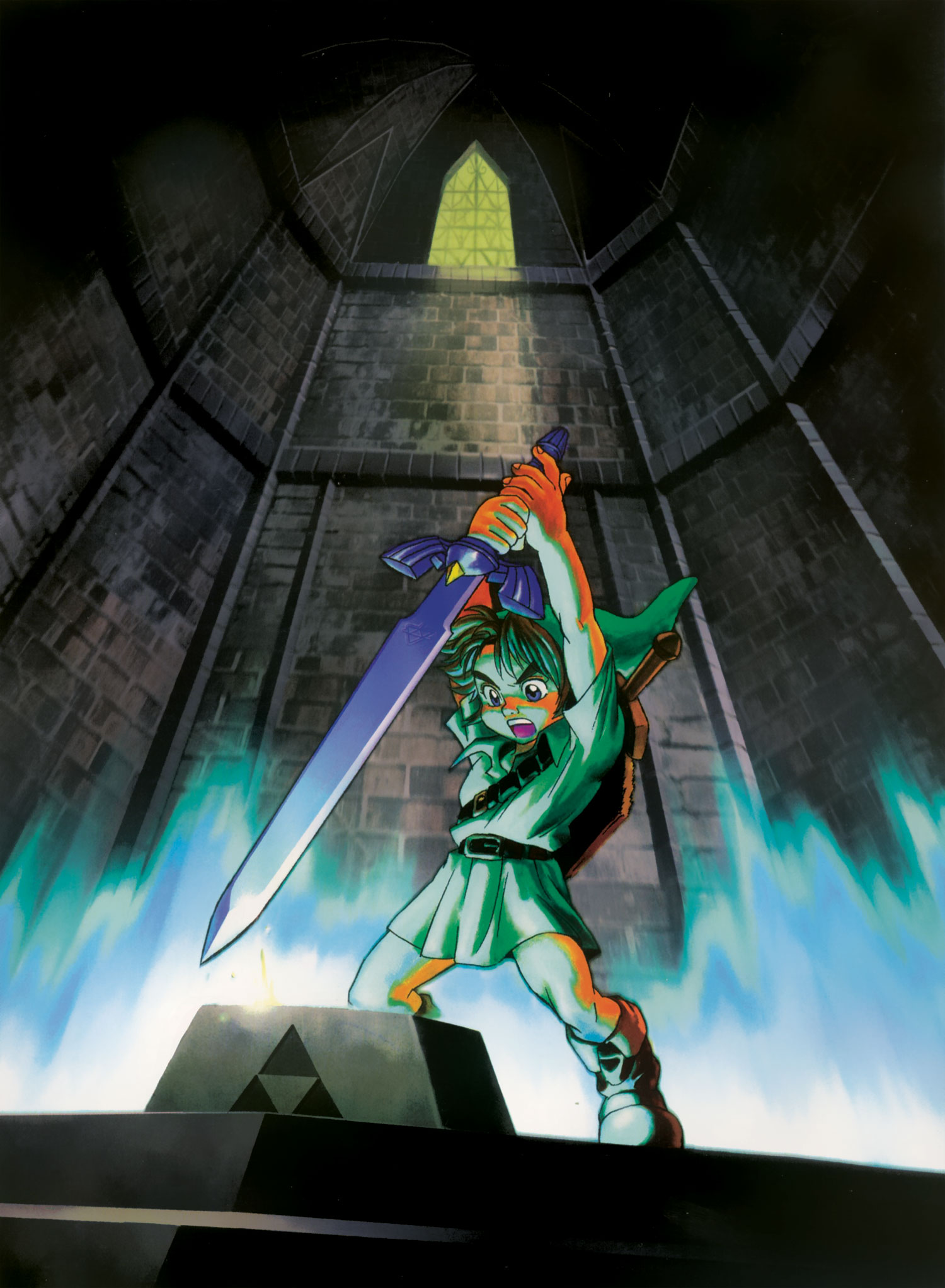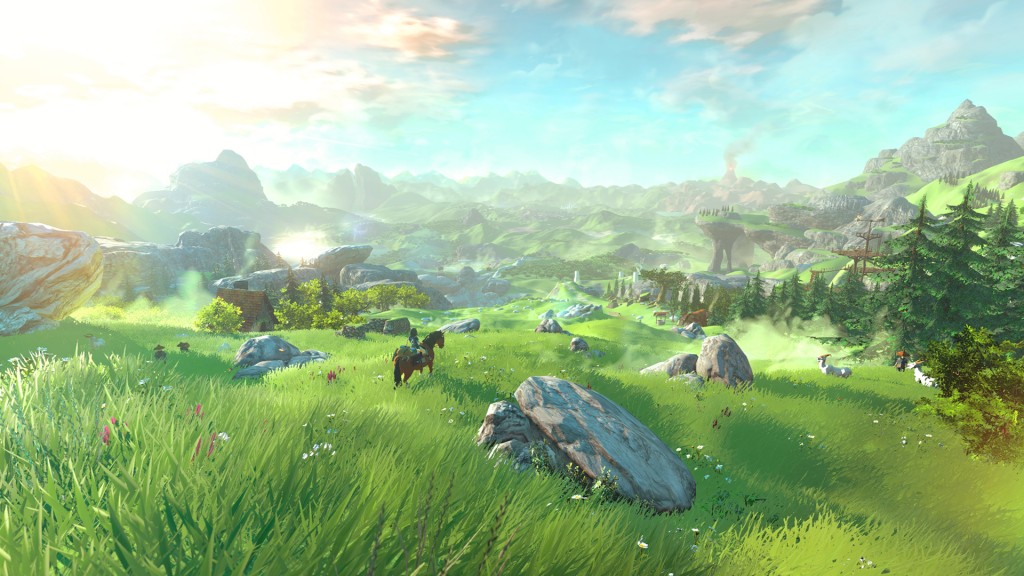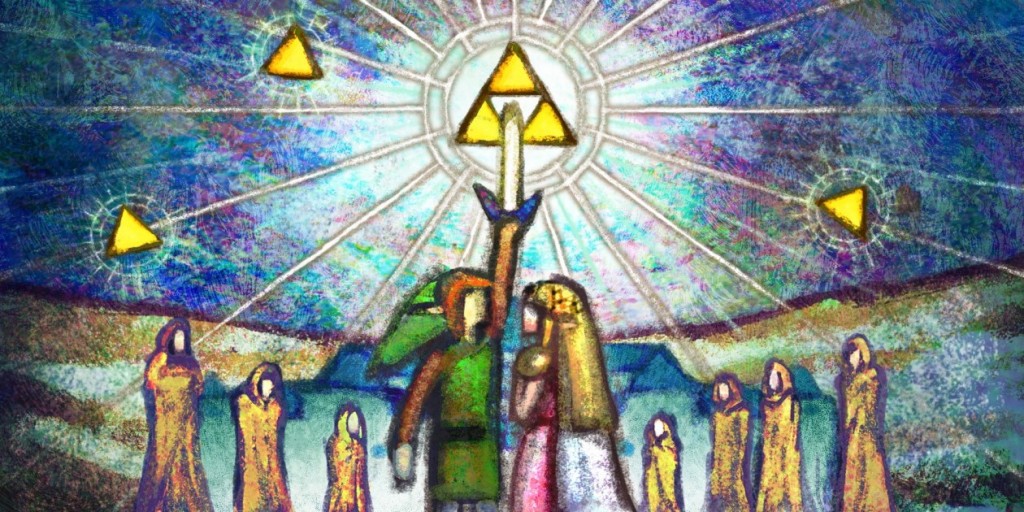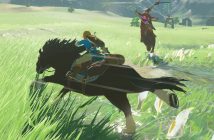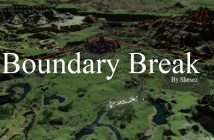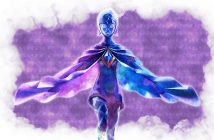Some questions need to be answered, like how do the 17 games in the Legend of Zelda series relate to one-another?
Luckily, 2011’s Hyrule Historia gave us Nintendo’s official explanation, connecting the games through a split timeline created in 1999’s The Ocarina of Time (OoT).
Nintendo says there are three possible timelines created as a result of the events in OoT and that this explains how the different games exist in the same universe.
So we’ve got the original Legend of Zelda, released in 1987, which we’re told is really the fourth game in one of the timelines. Got it. Next is Adventure of Link, released in 1988, a direct sequel to the original.
In 1990 we get a prequel to the ’87 original in A Link to the Past, followed in 1999 by OoT, another prequel. So we’re starting to go backwards at this point.
Then we get a direct sequel to OoT in 2000’s Majora’s Mask, but this game takes place in a timeline we hadn’t seen up until that point.
Make sense so far? No?
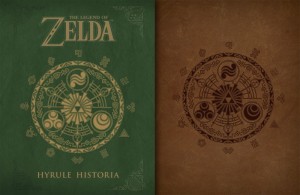
Admittedly, the timeline has some awkward retconning devices and questionable paradoxes, but who cares? Time travel is fun! And I think we’re all willing to grant Nintendo a few liberties in trying to make all the games fit together after-the-fact.
That being said, now that Nintendo has established a unified timeline, they’re bound by it, to a certain extent.
Key plot points cemented into place by Hyrule Historia may significantly impact Post-Historia installments.
Additionally, the timeline itself raises questions that may need to be answered or considered in future games.
How do we make sense of it all? First, you have to understand how the nuances of the split work.
Year Zero
Ocarina of Time begins in what we’ll call Year 0.
Link and Princess Zelda are children and they’ve learned that Ganondorf, the King of Thieves, has a plan to invade the Sacred Realm and steal the Triforce, a divine object that can grant the wishes of those that touch it.
Zelda devises a plan of her own to beat Ganondorf to the Triforce and recruits Link to help her open the door of time, the entrance to the Sacred Realm.
Link successfully opens the door of time and finds the Master Sword, the last key to opening the Sacred Realm.
He pulls the Master Sword from its pedestal, which inadvertently allows Ganondorf access to the Triforce.
Because he was too young to defeat Ganondorf when he pulled the Master Sword in Year 0, the Sword seals Link away in the Sacred Realm to protect him until he will be old enough to carry out his destiny.
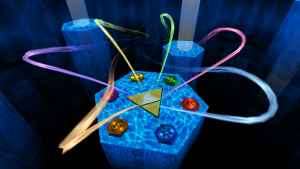
Unfortunately, this also means that there is no one to stop Ganondorf from taking the Triforce of Power, corrupting the Sacred Realm, and taking over Hyrule.
Link re-awakens seven years later – in what we’ll call Year 7 – where he is now an “adult” capable of wielding the Master Sword. Link is told he’s the Hero of Time, destined to defeat Ganondorf and return peace to Hyrule.
To collect the items necessary to defeat Ganondorf in Year 7, Link must travel back and forth in time between Year 7 and Year 0.
Link can travel through time by putting the Master Sword back into its pedestal in Year 7, which sends him back to Year 0, to a moment just after he pulled the Sword as a child. He can then return to Year 7 by pulling the Sword back out of the pedestal.
Now, there are two possible “endings” to OoT according to Hyrule Historia; either Ganondorf defeats Link – whether in Year 0 or 7 – or Link defeats Ganondorf as an adult in Year 7.
The ending where Ganondorf defeats Link creates the Fallen Hero Timeline: Ganondorf succeeds in completing the Triforce, leading to the Imprisoning Wars and eventually the events of A Link to the Past.
The Fallen Timeline is really the Retconn Timeline, existing mainly to cram the three games released before OoT in with the others. The concept of Link having lost in OoT is weird because it’s really more of an alternate timeline than a paradox split … but let’s just call it a creative solution and move on to the juicer stuff.
The Split

If Link defeats Ganondorf as an adult in Year 7, the actual split in the timeline takes place.
After Ganondorf is defeated in Year 7, Princess Zelda uses the Ocarina of Time, a magical heirloom of the Hyrulean royal family, to send Link back in time to Year 0.
Why? Because Zelda wants Link to go back in time and prevent the events from happening that led to Ganondorf corrupting the Sacred Realm, and eventually Year 7.
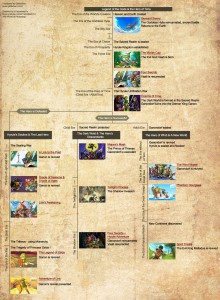 After all, it was Zelda’s original plan in Year 0 – to have Link open the Sacred Realm – that set the events in motion that allowed Ganondorf to touch the Triforce, leading to the Year 7 world.
After all, it was Zelda’s original plan in Year 0 – to have Link open the Sacred Realm – that set the events in motion that allowed Ganondorf to touch the Triforce, leading to the Year 7 world.
So Zelda’s new plan is to send Link back to a point in time in Year 0 before he pulled the Master Sword as a child.
In this new version of Year 0, Link never pulls the Master Sword and instead warns the child Zelda about Ganondorf’s true plan. Zelda and Link are thus able to prevent the series of events leading to Year 7 from occurring.
The Flow Chart Of Time
So when Link approaches the Master Sword for the first time in OoT, imagine a flow chart: Box 1 is “Will you pull the Master Sword?” Yes or No.
If Link chooses “No”, it’s because he’s the Link that just played through the events of OoT and returned from Year 7, and he will warn Princess Zelda, preventing the events leading to Year 7 from occurring.
This is the Child Timeline.
The Child Timeline follows the Link that doesn’t pull the Master Sword in Year 0 through the events of Majora’s Mask and eventually leads to the events of Twilight Princess.
If Link chooses “Yes”, he pulls the Master Sword and is sealed in the Sacred Realm for seven years.
This is the Adult Timeline: Link awakens in Year 7 and plays through the events of OoT. Link defeats Ganondorf in Year 7 and is eventually sent back in time by Zelda to choose “No” in Box 1, creating the Child Timeline.
Wait? How does that work? Obviously Link needs to pull the Master Sword to start the chain of events that lead to Year 7, but how does the Adult Timeline exist if it always ends with Link going back in time to create the Child Timeline ?
A Tale Of Two Hyrules

So how does this split make sense?
It’s easiest understood from the perspective of someone living in Hyrule during the seven year span that OoT takes place in.
To a bystander in Hyrule, Link pulls the Master Sword in Year 0, disappears for seven years, then reappears briefly in Year 7 to defeat Ganondorf, only to disappear again.
The way the timelines work in Hyrule Historia, no matter what Link does after he defeats Ganondorf in Year 7, the Adult Timeline remains unchanged. The only changes in Year 0 that effect Year 7 are those made before Link travels to Year 7 the last time to defeat Ganondorf.
So when Zelda sends Link back to Year 0 to prevent Year 7 from occurring, the Hyrule of Year 7 that Link leaves continues on as it is without him.
Essentially the Hyrule of Year 7’s fate is sealed the first time Link pulls the Master Sword in Year 0.
We can see then that the split between the Adult and Child Timelines is really based on viewpoint: the Adult Timeline follows the viewpoint of the Hyrule of Year 7 that went through the events of OoT, while the Child Timeline follows the viewpoint of the Hero as he travels back through time.
The Hyrule Link Forgot
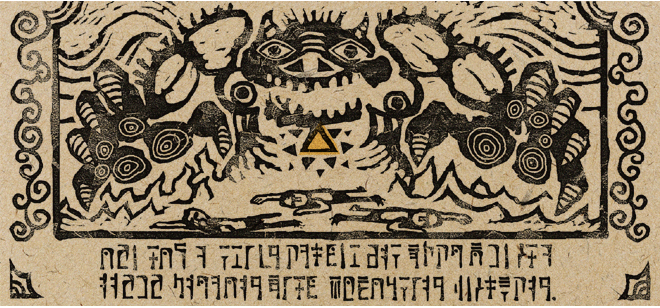
The Adult Timeline has a weird relationship with the Hero of Time.
Take the Adult Timeline’s Princess Zelda for instance; from her viewpoint, she had two or three brief encounters with Link as a child before he pulled the Master Sword and disappeared for seven years.
Link then returned for, what, maybe a week? Possibly even a day or two? Defeated Ganondorf, then disappeared again forever.
And by forever I mean forever. Consider that: Link never dies or finishes his life in the Adult Timeline, he literally just disappears.
There are a couple conclusions we can draw from this.
The first is that we know everything Link did in Year 7 as, technically, we saw all the time he spent there.
The second is that the Master Sword got put back into the pedestal of time at the end of Year 7 by someone that wasn’t Link. How do we know this?
At the end of Year 7, after defeating Ganondorf, Link is sent back to Year 0 to create the Child Timeline, but it appears in the game that he still has the Master Sword with him when he leaves.
The next time we see the Master Sword in the Adult Timeline is under Hyrule Castle in the Wind Waker.
It makes sense that the location of the Master Sword would have changed after the events of Year 7, as Hyrule Castle and the Temple of Time would have had to have been rebuilt after Ganondorf was defeated.
The unresolved question is how did the Master Sword get where it is in Wind Waker?
Dude Where’s My Master Sword?
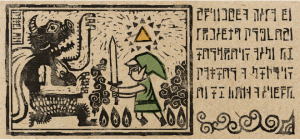 To the best of our knowledge, Link is the only person that wields the Master Sword in any of the Zelda games. It also seems that the Master Sword only exists in one physical and temporal place.
To the best of our knowledge, Link is the only person that wields the Master Sword in any of the Zelda games. It also seems that the Master Sword only exists in one physical and temporal place.
This raises some interesting questions with regard to the placement of the Master Sword in the three different timelines.
Again, consider the Adult Timeline from a Hyrulean bystander’s view point; the Master Sword was in the pedestal, then Link pulled it and was sealed in the Sacred Realm.
Whether the Sword remained in the pedestal while Link was sealed is unclear, but when he reappears in Year 7, he takes the Master Sword with him to defeat Ganondorf.
As we discussed previously, nothing Link does after he travels to Year 7 the last time effects Year 7, so the Master Sword has to exist somewhere in Year 7 when Link leaves if we see it again in Wind Waker. So where is it?
And then there’s the Fallen Timeline: When Link pulled the Master Sword and was then defeated by Ganondorf, what happened to Sword? We can assume Link was defeated after he pulled the Sword because Ganondorf was able to enter the Sacred Realm, implying Link opened the seal.
In the game that follows in the Fallen Timeline – A Link To The Past – Link finds the Master Sword in a pedestal in the sacred grove.
Let’s assume the grove is the remains of the Temple of Time, we still have to ask who put the Master Sword back in the pedestal? Is it possible that whoever put it back, maybe one of the Knights of Hyrule, wielded it during the Imprisoning War?
Equestrian Historia
Recall that in the Child Timeline – which leads to the events of Majora’s Mask and Twilight Princess – Link never pulls the Master Sword in Year 0.
This means that in the Child Timeline, until the events of Twilight Princess, the Master Sword hasn’t been pulled since it was sealed by the original Link at the end of Skyward Sword.
 Majora’s Mask and Twilight Princess are generally considered to be darker, grittier games, in both motif and theme, when compared to the other Zelda titles; and maybe this dark tone is a reflection of the melancholy circumstances of the Child Timeline itself.
Majora’s Mask and Twilight Princess are generally considered to be darker, grittier games, in both motif and theme, when compared to the other Zelda titles; and maybe this dark tone is a reflection of the melancholy circumstances of the Child Timeline itself.
We learn from Hyrule Historia that the Hero’s Shade, a character that teaches Link sword skills in Twilight Princess, is actually the spirit of the Hero of Time, the Link from OoT that defeated Ganondorf in Year 7 and returned to Year 0 to create the Child Timeline.
The air of regret and sadness in the exchanges with the Hero’s shade make sense when you consider what the the Hero of Time lived through: he’s a child that lost seven years of his life and then had the responsibilities of a hero thrust upon him, only to be asked to undo all the work he’d just done when he finished.
Imagine the Hero’s Shade’s grief if he knew what happened to the Hyrule he left behind in the Adult Timeline!
The Hero of Time lived an entire life, possibly the most important life ever, and it never happened, as far as the world is concerned. That would rattle anyone, let alone a child.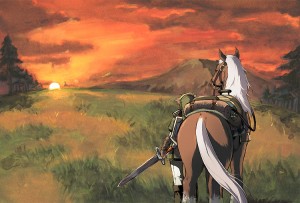
In a way, the one event that took place in Year 7 of the Adult Timeline that followed Link to the Child Timeline was winning Epona, the horse.
Link has Epona, or an Epona, in Majora’s Mask and Twilight Princess, the two games that take place in the Child Timeline.
It can be argued that Link’s relationship with Epona exists in Year 0 – when he learns Epona’s song – prior to pulling the Master Sword, and that it is therefore independent of Year 7’s events; however, this fails to take into account that it’s Link’s experience in Year 7 with the adult Epona that creates the bond he has with her in the Child Timeline.
Link never rides Epona as a child in Year 0, but he’s riding her as a child to begin Majora’s Mask. So what’s different?
Link, obviously; he has the memories of the Year 7 adult Epona and knows what she did in the Adult Timeline. Epona was Link’s main companion in Year 7 and we can assume he would carry that attachment back to the Child Timeline.
Is it possible that Epona has a predestined role in Hyrule’s fate as well? Or, in the same way that the spirit of the Hero is reincarnated again and again, maybe the spirit of the Loftwing, the spirit animal and mode of transportation for Hylians in Skyward Sword, is somehow born again in Epona as an animal aid to the Hero in his journey?
It’s a stretch, but it makes sense, as we’ve only seen Epona in the Child Timeline, the timeline that follows the the Hero through his life.
U-Turn
So what do we know about the timelines that can give us insight into where Zelda Wii U will fit in?
Well, we know that the Master Sword has been in every game since A Link to The Past, so we can expect it to pop up.
We know Epona is in the game, which indicates the Child Timeline.
We know it’s unlikely it will be positioned in the Adult Timeline, mainly because of how explicit Wind Waker is about the history of Hyrule leading up to the Flood.
And we know where the biggest holes in the current timelines exist; between Skyward Sword and OoT, after Adventure of Link in the Fallen Timeline, and after Twilight Princess in the Child Timeline.
The period of time after Skyward Sword but before OoT is relatively undefined in both narrative and span, and I’d bet Zelda Wii U will take place somewhere here, before the split in OoT.
Similarly, the narrative of Hyrule is open-ended after Adventure of Link and Twilight Princess, the last games in the Fallen and Child Timelines, respectively.
But just for fun, let’s look at another possibility.
Fallen But Not Out
In the Fallen Hero Timeline there’s a conflict referred to as the Imprisoning War; the fight to seal off the Sacred Realm after Link is defeated in OoT.
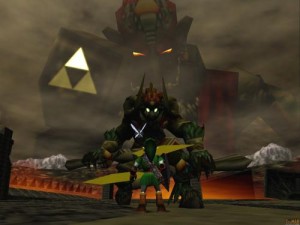 Quick reminder:
Quick reminder:
In the Fallen Timeline, the Hero of Time challenged Ganondorf in battle and “lost”, Ganondorf obtained the full Triforce, and was transformed into the Demon King.
As a final resort,“The Seven Sages of Hyrule, led by Princess Zelda, sealed Ganon and the Triforce in the Sacred Realm.”
The Imprisoning War is the battle that takes place when the Seven Sages later attempt to permanently seal the Sacred Realm.
Apparently the seal they made when they put Ganon in after OoT wasn’t good enough.
During the Imprisoning War, the Sages are protected by the Knights of Hyrule.
This is what Hyrule Historia says about the Knights:
“Their members descended from the Hero who governed the Crest of Courage … it is possible that Link, the Hero of Time, was once a Hylian Knight himself. This may be the reason his mother became embroiled in the fires of war.”
We can parse out a few possible meanings here. The most straight-forward interpretation is that this is a typo and that Hyrule Historia is implying that the Hero of Time’s father was a Hylian Knight that protected the royal family before the events of OoT. This makes the most sense, as Link’s mother escaping the “fires of war” is mentioned in OoT‘s back-story.
But there’s a sexier reading. What if it’s implying that Link, the Hero of Time, doesn’t die in the Fallen Timeline, but instead survives his defeat and then fights in the Imprisoning War?
Hyrule Historia never explicitly says Link is killed by Ganondorf, we just assume it in the context of defeat.
What it does say is that Ganondorf obtains the Triforce of Courage, but it also says he obtains the Triforce of Wisdom, and we know Princess Zelda survives through the Fallen Timeline to lead the Sages in sealing Ganondorf in the Sacred Realm. This means Ganondorf took Zelda’s piece of the Triforce without killing her, meaning it’s plausible that he took Link’s Triforce of Courage without killing him.
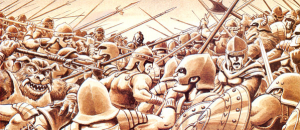 So what if the Fallen Timeline is more than it seems, and rather than being a timeline where the Hero dies, it’s a timeline where the Hero fails to defeat Ganondorf in Year 7?
So what if the Fallen Timeline is more than it seems, and rather than being a timeline where the Hero dies, it’s a timeline where the Hero fails to defeat Ganondorf in Year 7?
Remember, when Link succeeds in defeating Ganondorf in Year 7 of the Adult Timeline, he gets sent back in time to Year 0 to prevent himself from pulling the Master Sword, creating the Child Timeline.
In this context, victory for the Hero is creating the Child Timeline, because this avoids the harm caused by Ganondorf in the Adult Timeline.
This means defeat, rather than death, is actually any scenario where the Hero doesn’t create the Child Timeline.
If Link survives the events of OoT in the Fallen Timeline, it explains Hyrule Historia’s blurb about the Knights of Hyrule as well as how the Master Sword got into the sacred grove before A Link To The Past; Link used it to seal the Sacred Realm in the Imprisoning War.
Timeline Of Your Life
So the timeline is a blessing and curse; just as many questions are raised as are answered, and Nintendo reserves the right to make it up as they go along.
And let’s be real, it’s a video game and at the end of the day Nintendo wants to sell games.
But that doesn’t mean the timeline is any less real or relevant.
You can’t dismiss it with a “Who cares, it’s a video game!”
Who cares if Han shot first? Who cares what Bob said to Charlotte at the end? Who cares if Batman gets the Killing Joke?
Fiction, especially good fiction, is as real as you’re willing to make it; we use our imaginations to fill in the spaces between the words and pictures to make them come alive.
That’s magic.
It’s easy to dismiss the timeline as less than worthy of discussion because Nintendo makes games, not stories. But whether the plots of the Zelda games were written with a continuous narrative in mind or not, that doesn’t make the narrative that does exist any less interesting or compelling.
It’s clear that in-game plots have become more important and more complicated in every Zelda release since OoT, and while some aspects of the timeline may seem silly or inconsequential now, remember that we are living in a Post-Historia world, and regardless of where Zelda Wii U fits in, “The flow of time is always cruel.”

